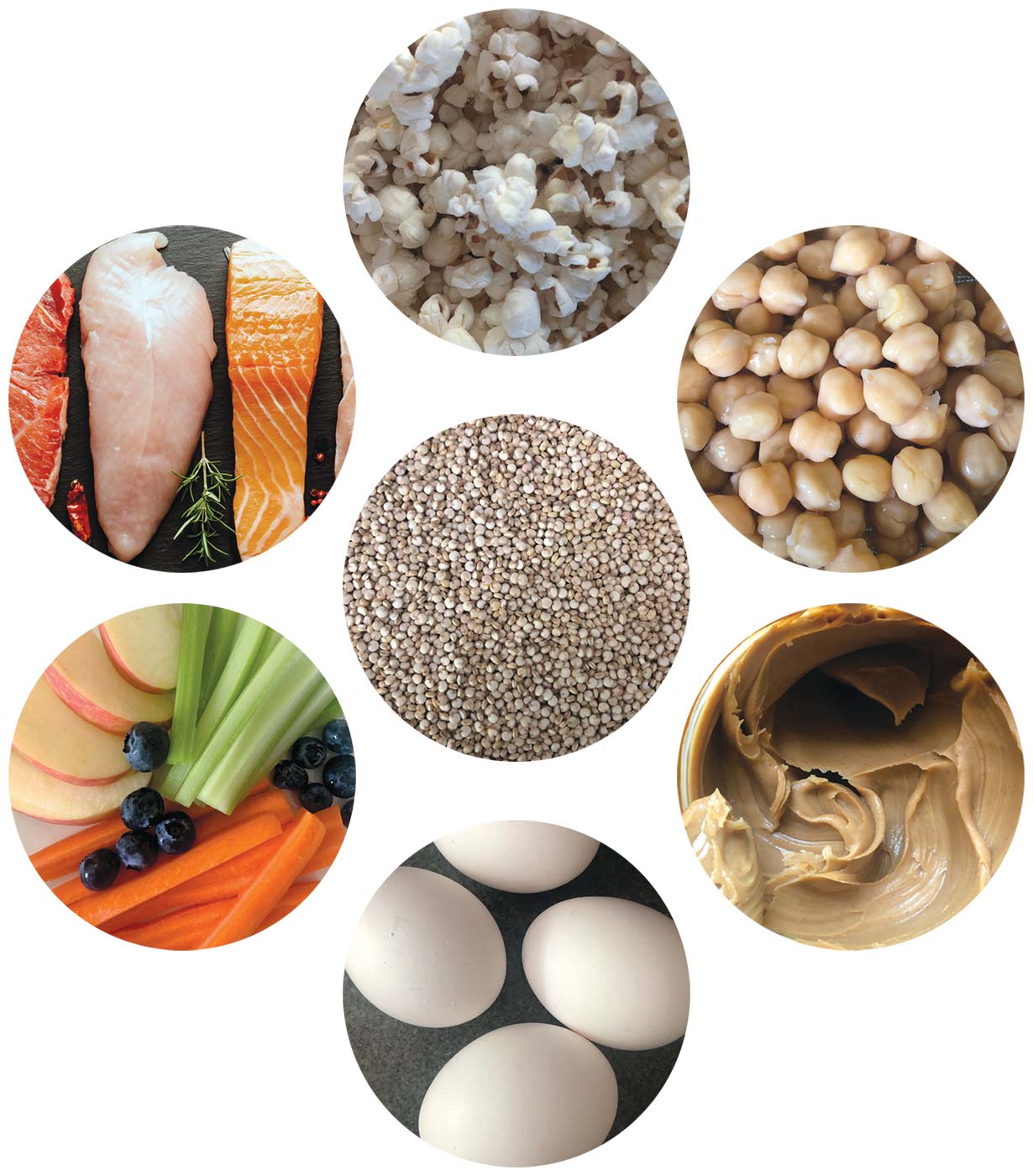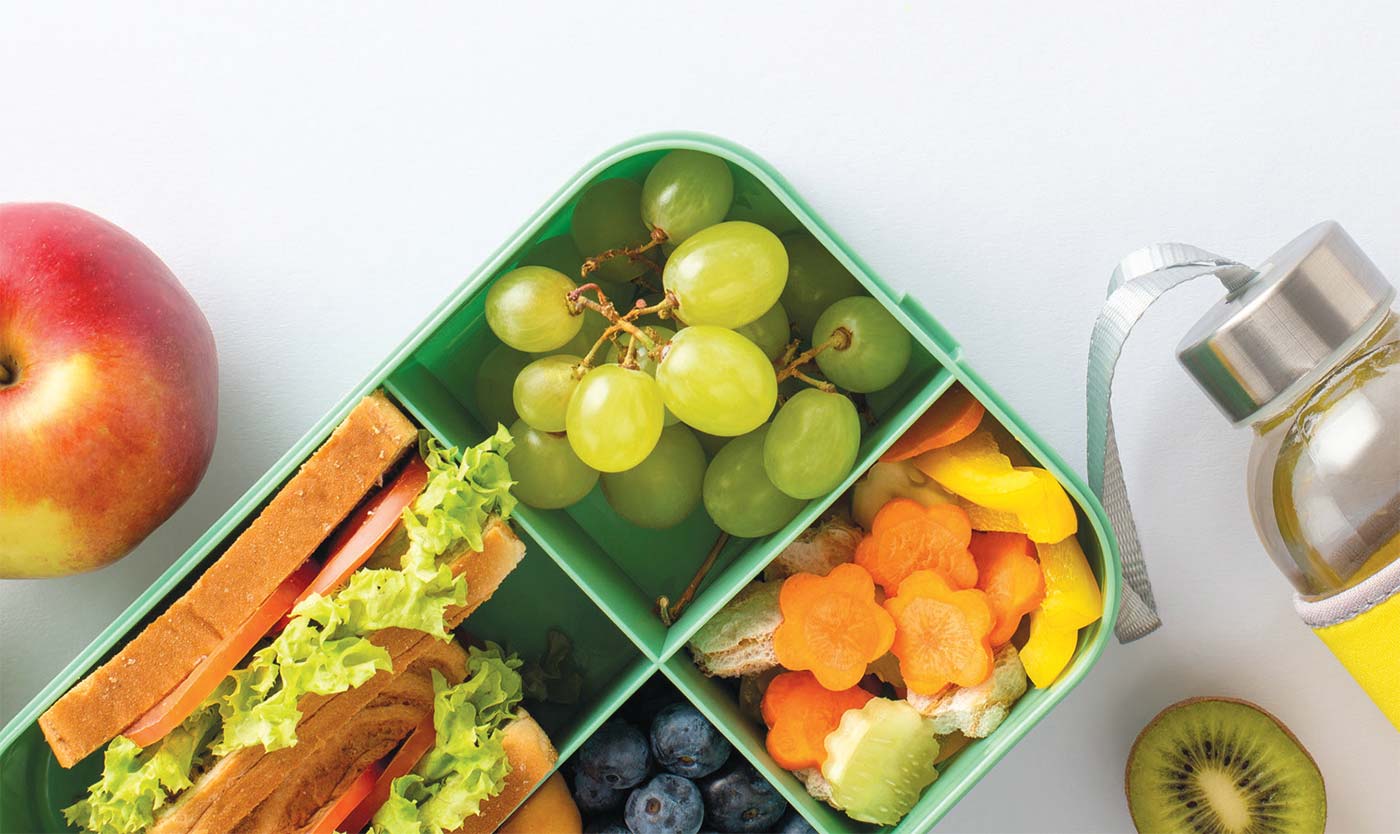Teen Nutrition
From forming friendships, to coping with growth spurts, to figuring out what to wear—being a teenager can be confusing. One thing that’s constant, especially as a teen, is the need to eat. Eating right is crucial during this time of development but can have its challenges. A teen’s busy schedule can often become overloaded with study, social, and athletic obligations. However, with a little prep and planning—and understanding why nutrition is so critical at this age—it is possible to instill good eating habits that will last a lifetime.
Adolescence generally starts around age 11, and continues until adulthood, between the ages 18 and 21.
“It is a time of major physical, emotional, and cognitive changes during which a child develops into an adult,” says Rena Zelig, associate professor at Rutgers School of Health Professions in Newark.
“They are adjusting to a new body that has changed in shape, size, and physiological capacity. These dramatic developments affect nutritional status and significantly increase their needs for both macronutrients and micronutrients,” she says, adding that, like individuals of all ages, teens require a mix of essential proteins, carbohydrates, and fats, as well as vitamins and minerals for optimal health.
“A balanced diet includes foods from all food groups—fruits and vegetables (think eating a rainbow), grains (with a focus on making half your grains whole to increase dietary fiber), and proteins including both meat and dairy products as well as non-meat and non-dairy alternatives (with a focus on lower-fat versions). These foods are generally a great source of vitamins and minerals,” she says.
Zelig notes that some nutrients that are especially key for teen growth and development that are often under-consumed include calcium, vitamin D, iron, and folate.
“Calcium is the main constituent of bone mass, and about half of peak bone mass is accrued during adolescence,” she says. “Dairy foods are generally the best sources of calcium, and vitamin D plays an essential role in facilitating its absorption.”
Zelig adds that iron is also important because it’s a critical component of blood, and because of a teen’s increased rate of growth, there’s an increase in blood volume. Folate is necessary for producing healthy red blood cells and is important for women to consume throughout their reproductive ages between 15–44 years old.
While males and females are going through similar changes, there are some key differences.
For males, Zelig explains, body fat decreases during adolescence resulting in an average of approximately 12% total body fat by the end of puberty. The opposite happens for young women, whose average body fat increases anywhere from 16% to 26%.
“Herein lies the problem,” says Zelig. “Even though the accumulation of body fat by young women is a normal and physiologically necessary process, adolescent females often view it negatively. This dissatisfaction is common and can lead to potentially health-compromising behaviors such as excessive caloric restriction, fasting, use of diet pills or laxatives, and, in some cases, the development of body image distortions and eating disorders,” she says, adding that it’s crucial for young folks to understand that these changes are healthy and natural.
While hormonal and physiological changes affect mood, so does what we eat, which is why certain foods should be avoided.
“Sugar increases dopamine levels in the brain and triggers the reward system,” says Nicole Piazza, MS, RD, and co-owner of Nourish to Heal in Clinton. “Teens are particularly drawn to reward and seek quick releases of dopamine more than adults, which is why it’s important to teach teenagers that all foods fit into a healthy diet, but at different levels,” says Piazza. “It’s OK to eat dessert, but it’s more important to eat a balanced, nutritious meal first,” she says, adding that processed foods are readily available to teenagers but should be limited because they do not contain the nutrients needed to grow.
“THEY ARE ADJUSTING TO A NEW BODY THAT HAS CHANGED IN SHAPE, SIZE, AND PHYSIOLOGICAL CAPACITY. THESE DRAMATIC DEVELOPMENTS AFFECT NUTRITIONAL STATUS.”
“Many processed foods contain high amounts of sodium and sugar, which should be limited,” she says. “Soft drinks have lots of sugar and not a lot of nutrients. They also contain caffeine, which is a stimulant that can affect alertness and sleep patterns as well as impact blood sugar, which can cause mood swings,” she says, not to mention contributing to weight gain and encouraging chronic conditions like prediabetes, diabetes, and heart disease.
Unfortunately, junk food is something very easy to acquire.
“It’s much easier to open a bag of pretzels or chips than it is to peel and slice up fruits and vegetables,” says Caryn Alter, registered dietitian at CentraState Medical Center in Freehold, who recommends parents keep a prepped variety of healthy snacks in the fridge for easy access.
“Parents can greatly impact their teen’s eating habits by making healthier foods easy to access as well as helping them get involved in family meal preparation,” she says.
“When teens learn cooking skills early on at home, they’re more likely to prepare balanced meals when they become responsible for their own food choices after they leave home,” she says. “Influencing good eating habits now helps pave the way for healthy eating in the future.”

PHOTOS: BEEF/CHICKEN/SALMON IMAGE BY NEHOPELON /ADOBESTOCK; ALL OTHERS BY DEBRA TRISLER
7 STAPLES TO KEEP ON HAND
Courtesy of Caryn Alter, registered dietitian at CentraState Medical Center, Freehold
POPCORN:
It’s whole grain, crunchy, full of fiber, and kids love it.
CANNED BEANS:
Easy to prepare and heat up and can be added to burritos, tortillas, salads, or in soups.
NUT BUTTERS:
Peanut, almond, or sunflower butter. Easy to spread on fruit, vegetables, or crackers.
EGGS:
Fried, scrambled, or hard boiled, eggs are an easy protein for teen cooks as they don’t take long to make. They’re a good source of B12, protein, choline, and phosphorus, which are all essential nutrients for teens.
PREPPED FRUIT AND VEGETABLES:
Easy to eat if already washed and cut up, fruits and vegetables can be added to any dish or enjoyed as a snack on their own.
GRAINS:
Quinoa, instant brown rice, and couscous are quick and easy to cook. Add vegetables and seasoning and protein of choice for a simple meal.
LEAN PROTEIN:
Keep chicken, fish, beef, tempeh, or tofu on hand to be added to any noodle or rice dish.
“PARENTS CAN GREATLY IMPACT THEIR TEEN’S EATING HABITS BY MAKING HEALTHIER FOODS EASY TO ACCESS AS WELL AS HELPING THEM GET INVOLVED IN FAMILY MEAL PREPARATION.”





